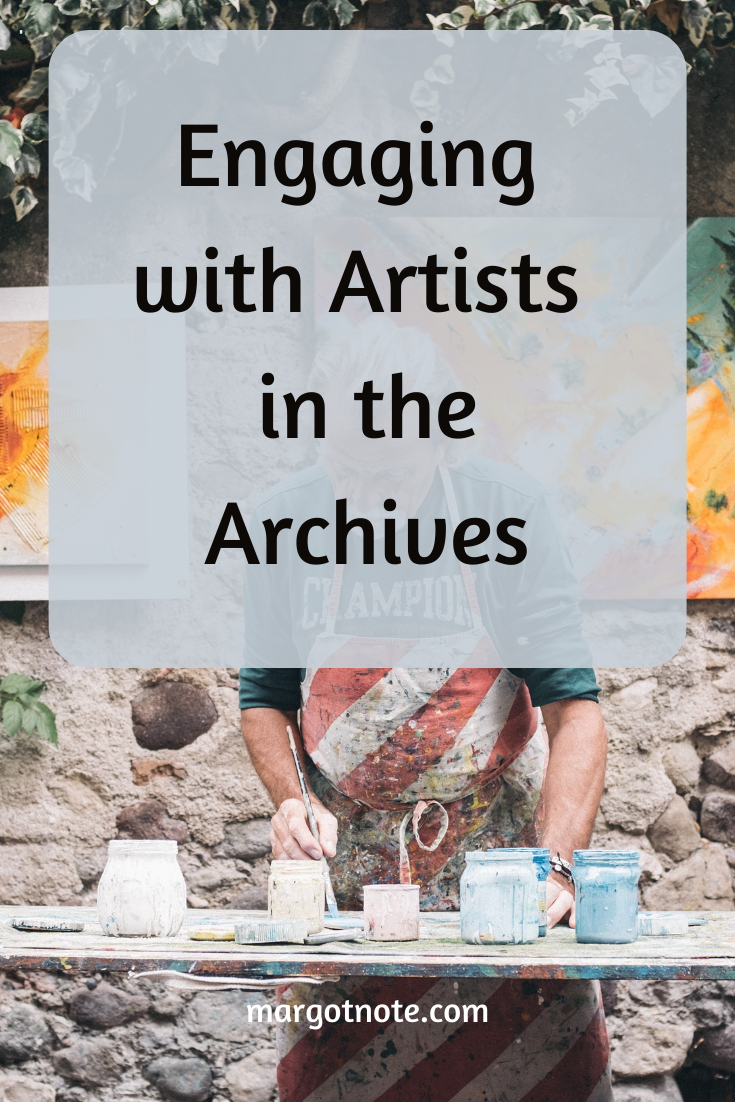For some institutions, serving artists is a core component of their identity. For example, the Wallace Library at Juilliard serves musicians, the Harry Ransom Center serves writers, and the National Gallery of Art Library serves visual artists.
Archives can also find ways to engage with creative communities to explore their collections and find inspiration in their holdings.
Combining Creative and Archival Practice
Archivists can combine creative and archival practice for the potential for fulfilling a significant function of cultural heritage: its role as a catalyzer in processes of social transmission of memory and community building. Creative practices in the archives can connect the organization, curation, and communication of memory with present-bound creative, performative, and participatory processes. These practices do not necessarily stand in the use of archival records, nor are they driven by archival institutions and stakeholders. Instead, at the core of archival creativity is the celebration of the past through contemporary acts of creation and transmission. Archivists who seek out creative users marry the archival and the artistic by recording and tracing the past with contemporary creative practice.
The creative use of archives can encompass performances, participatory exhibitions, communal celebrations, and commemorations. In a sense, the creative use of archives has existed in forms as simple as storytelling to enrapture an audience and by using objects to evoke past events. However, trends in the democratization of arts and heritage and the advent of digital media have provided archives with new creative valences, making them potent means for the sharing of memory in previously impossible ways for the archives or the arts alone.
Advancing Awareness
Working to increase the visibility of and emphasis on the arts within the larger structure of archival repositories also advances awareness of records of enduring value. Ways to reach out to the creative community to promote increased use include:
Developing artist workshops
Hosting artist residencies for the archives
Creating materials highlighting arts resources or the history of local arts
Partnering with arts groups or other organizations that serve artists
Working with local art schools for research tips, tours, or open houses
Increasing digitization of materials, including audio-visual resources
Mounting exhibits based on the aesthetic features of items rather than their historical significance
Allowing artists to curate exhibitions based on the organization’s holdings
Improving outreach to nontraditional users
Expanding interdisciplinary efforts for outreach
Developing materials on how the arts and history have influenced each other
Hosting performances, readings, and events for artists
Offering research services to local art commissions
Investigating arts collecting initiatives, depending on collection and acquisition policies
Pursuing arts, research, or digitization grants
Proactive Outreach
Archivists must be proactive with their outreach to artists because archives, and their potential for creative use, are not well known. Unlike museums, archives may have fewer staff members, be open fewer hours, and not have a robust online presence; some are part of institutions that may not highlight the archives. Specially focused collections may not appeal to the broad audiences that the comprehensive collections of a public library have. Because items are kept in closed areas for preservation purposes, visitors may misjudge the quantity and nature of the resources. Some materials may not be easily described and overlooked by online researchers. These factors combine to hide primary sources from artists.
The Creative Process
Artists in repositories can find inspiration in the collections themselves, the diverse ways they can use the materials, and the staff expertise that supports the collection. Many archival repositories will not replace the role of large public and academic libraries or arts-related special collections and archives in the research lives of artists. However, archivists can rethink the conceptions of their collections and find ways to serve artists as a user group better.
Archives host a world of resources, inspiration, and expertise that can enhance the activities of artists. By reframing their collections to appeal to creators and adding archives to the traditional repertoire of sources for artists, archivists employed in all types of institutions can enhance their services to artistic patrons by helping them access resources for their creative process.
The blog was originally published on Lucidea's blog.
Get Started
Looking for archival advising, records management, and historical research services? Click below to speak with an expert consultant.































